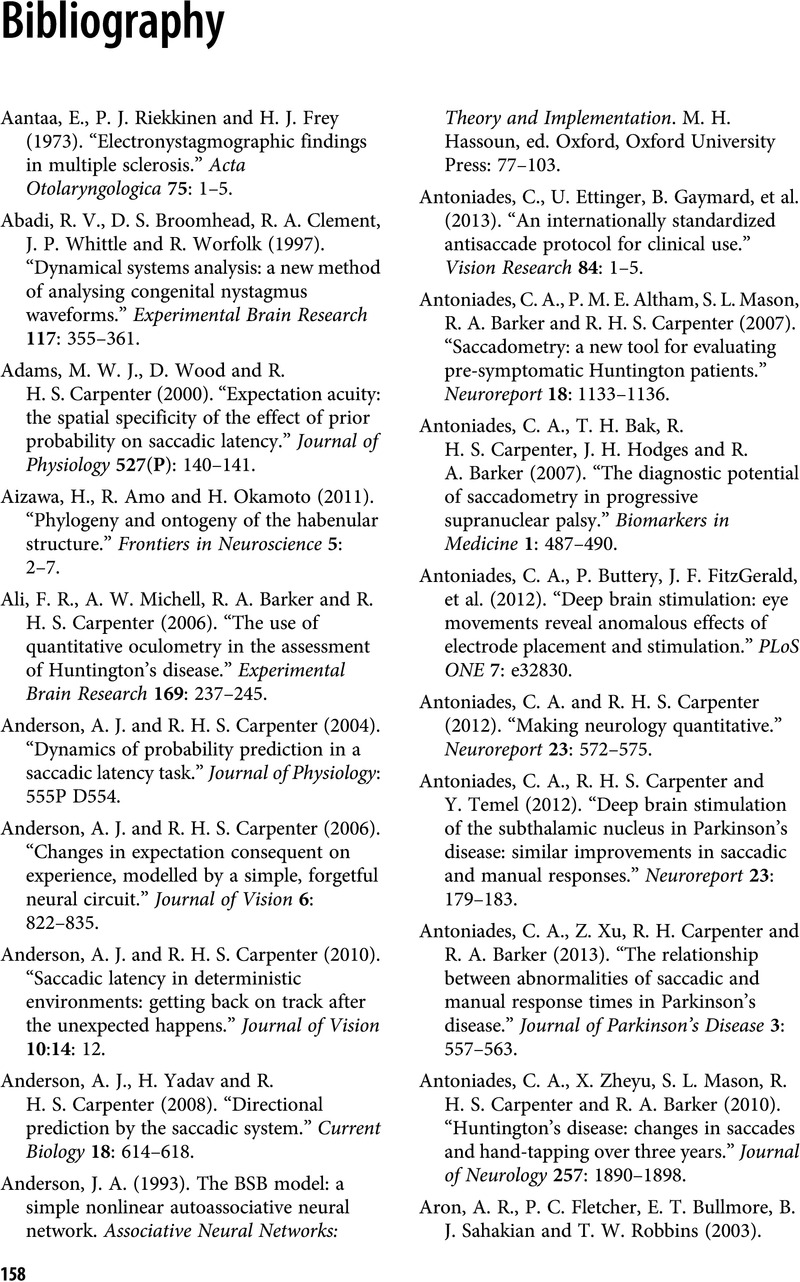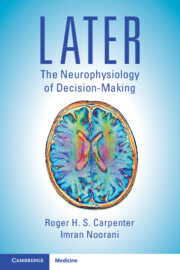Book contents
- LATER
- Reviews
- LATER
- Copyright page
- Contents
- Preface
- Acknowledgements
- Chapter 1 The Slowness of Reaction Time
- Chapter 2 LATER as a Model of Latency
- Chapter 3 LATER as a Model of Decision
- Chapter 4 Complex Decisions
- Chapter 5 LATER and the Brain
- Chapter 6 Larger Implications
- Book part
- Bibliography
- Index
- References
Bibliography
Published online by Cambridge University Press: 08 September 2023
- LATER
- Reviews
- LATER
- Copyright page
- Contents
- Preface
- Acknowledgements
- Chapter 1 The Slowness of Reaction Time
- Chapter 2 LATER as a Model of Latency
- Chapter 3 LATER as a Model of Decision
- Chapter 4 Complex Decisions
- Chapter 5 LATER and the Brain
- Chapter 6 Larger Implications
- Book part
- Bibliography
- Index
- References
Summary

- Type
- Chapter
- Information
- LATERThe Neurophysiology of Decision-Making, pp. 158 - 175Publisher: Cambridge University PressPrint publication year: 2023



